Natural Texture Usage in Interior Design
26/06/2024
The use of natural textures in interior design has been a growing trend in recent years. The use of natural textures not only adds beauty and freshness to homes, but also provides health and well-being benefits. This trend can be read as a reflection of the longing for natural and sustainable materials against the intense urbanization brought about by modern life. The use of natural textures in interiors provides aesthetic and functional advantages as well as positive effects on psychological and physical health. In this article, we will focus on the role of natural textures in interior design, their uses and the benefits these materials offer.
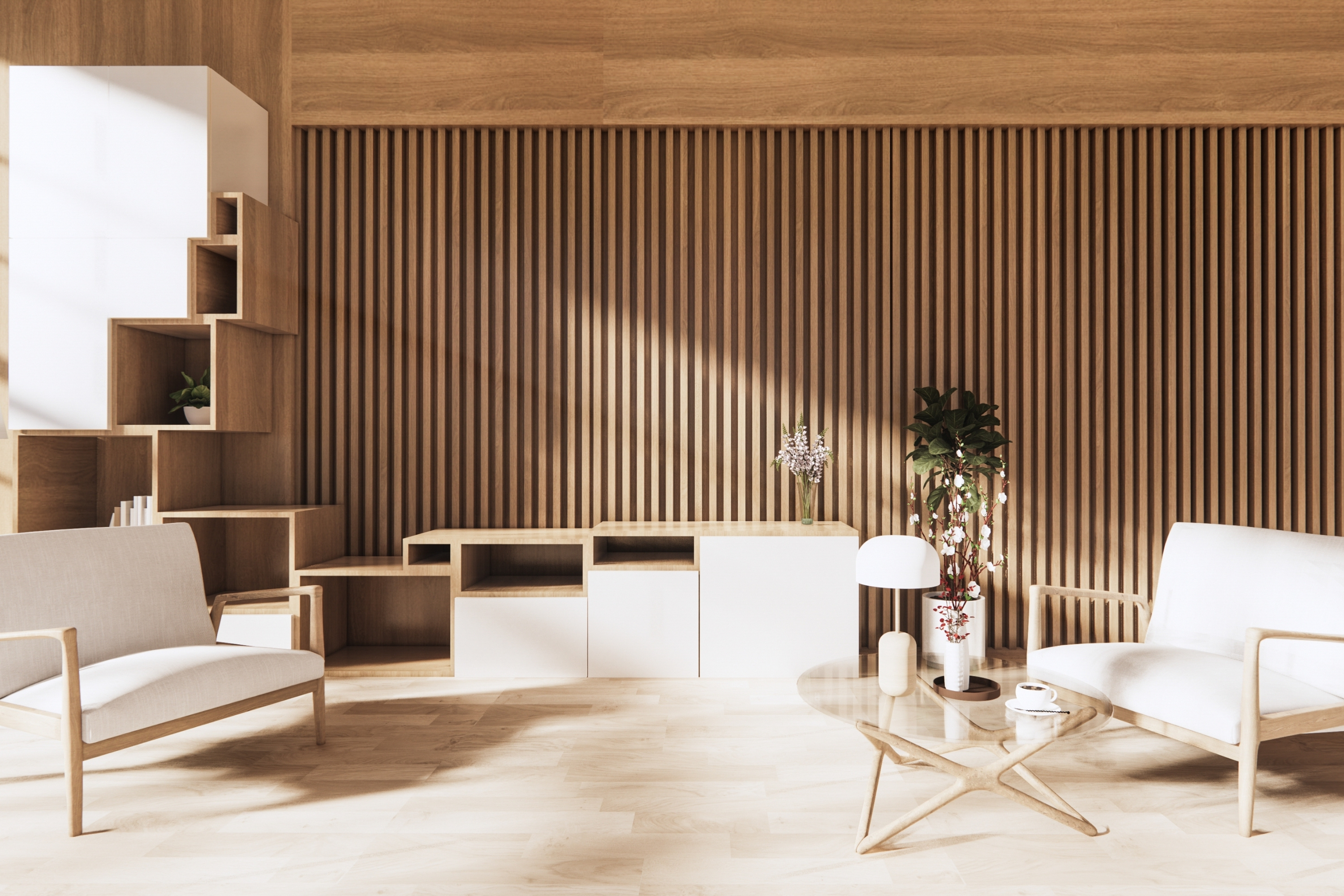
In today's fast-paced urban environment, people are becoming increasingly aware of the importance of nature in improving both our physical and emotional well-being. This awareness directly influences the design of the spaces where people reside. Discussions and studies on topics such as neuro-architecture and biophilia are becoming increasingly prominent in modern architecture and interior design. These discussions prompt us to think about the conscious and careful selection of design elements that shape our shared living environments.
Whether in residential, commercial or institutional settings, the use of natural materials such as wood creates a connection with the natural environment, reconfiguring the way we perceive our living spaces and how we are affected by them. In this way, it positively affects the way we feel and experience spaces. By combining natural textures, it is possible to create more peaceful spaces that provide a respite from the stress of urban life.
The Role and Potentials of Natural Textures in Design
Natural textures provide visual and tactile richness in the interior. Materials such as wood, stone and clay create a warm and inviting atmosphere. Wood, which stands out with its rich textural diversity and warm tones, adds sophistication to the space. Stone, on the other hand, creates a solid and aesthetic accent in the space with its durability and different color options. The use of natural textures not only provides aesthetic qualities, but also increases the functional potential of the space. For example, natural stones provide water resistance in humid environments and are therefore preferred in bathrooms and kitchens. Wooden furniture, on the other hand, is widely used in interiors due to its longevity and easy maintenance. Örneğin, doğal taşlar nemli ortamlarda suya dayanıklılık sağlar ve bu yüzden banyolar ve mutfaklarda tercih edilir.

The areas and techniques in which natural textures can be used in interiors are quite varied. Wooden floor coverings set the overall ambience of the space, while stone walls create a focal area and attract visual interest. Natural textiles can be used in curtains, carpets and furniture upholstery to add warmth and comfort to the space. Integrating natural textures into interiors has aesthetic and functional benefits as well as health and psychological benefits. Natural materials are healthier and have a positive impact on air quality as they do not contain toxic substances. In addition, the effects of natural textures on human psychology cannot be ignored. Natural materials such as wood and stone strengthen our connection with nature, which in turn helps to reduce stress levels and increase a sense of relaxation.
The use of natural textures in interiors also offers significant advantages in terms of sustainability. By using renewable and recyclable materials, the environmental footprint can be reduced. In addition, natural textures from local and sustainable sources minimize the carbon footprint and contribute to environmental sustainability.
A Timeless Natural Texture: Wood

Image taken from archdaily.com.
What is the reason why, despite the proliferation of modern materials, wood is still the most popular natural material for contemporary interiors? Whether in solid floors for a warmer atmosphere, elegant pieces of furniture or decorative elements such as moldings and paneling, wood can deliver quality results in different forms. Wood embodies all the benefits mentioned for natural textures. It is a living material that enhances the comfort of the interior. Its versatility shines through in a variety of shades, shapes and patterns, making it a valuable choice for architects and designers. It seamlessly complements a wide range of décor styles and uses, while maintaining its timeless and refined appeal. Plus, its natural inclination towards comfort is a factor that has propelled it to the forefront of the design industry. Strategies for incorporating wood texture into space are therefore varied.
1. Furniture
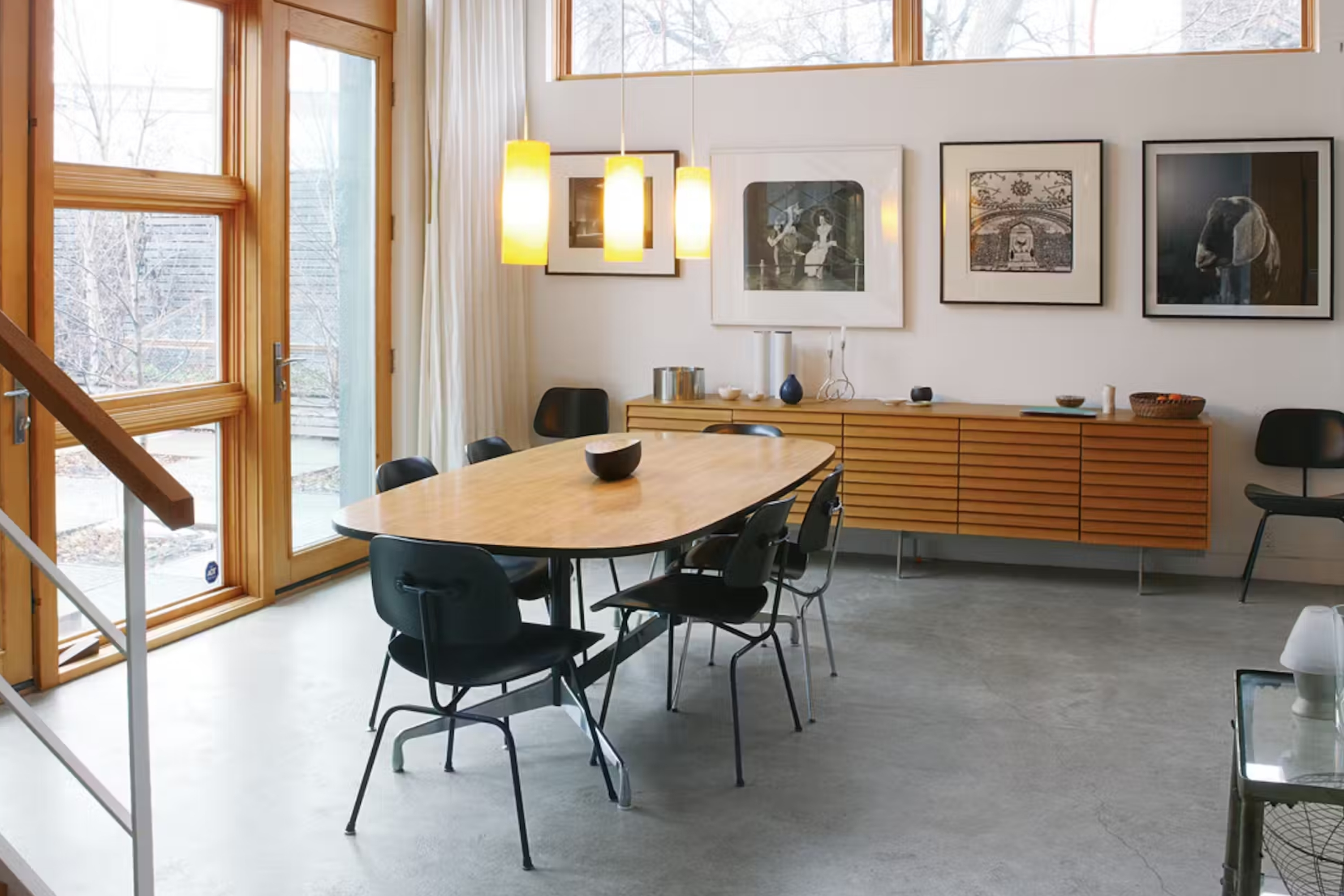
Image taken from dwell.com.
The use of furniture as a focal point that attracts attention in the interior stands out as a trendy trend in recent times. Although, it is often used with bold and vibrant colors, wood also stands out as a timeless material that is often preferred in minimalist, simple and modern interior designs. For this reason, wood textured furniture looks stunning in interior design styles.
2. Walls
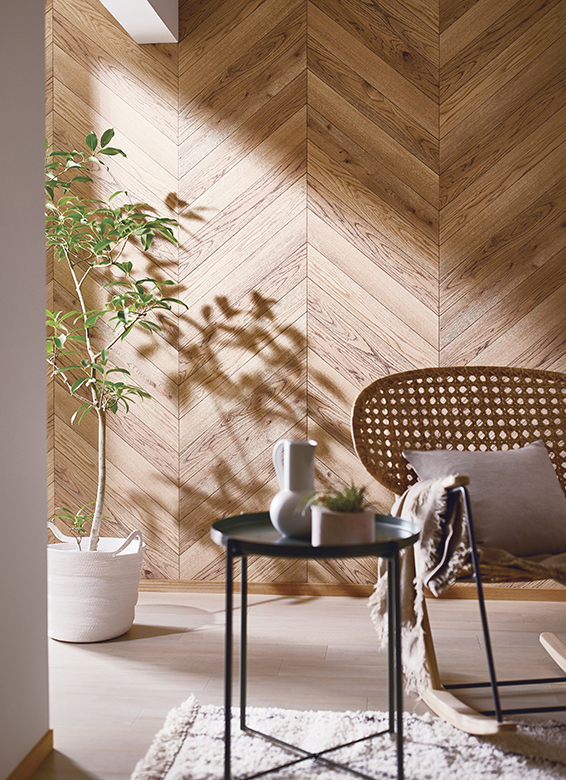
Image taken from interior-van.co.
Wood textured accent walls are another common use, especially in homes with simple and elegant modern themes. Darker textures of wood can be used to create elaborate traditional designs, while lighter tones, clean lines and grooves help to evoke a contemporary vibe.
3. Flooring
The choice of wood on the floor is the most common example of the use of natural textures in interiors. But it is still important to underline its importance. The choice of quality floor in interior design is decisive in many ways. Although there are many creative options that can be used in floor design, the universal aesthetics of wooden floors are one step ahead.
Dendro Heraklia-D47 is first lightly brushed to reveal the natural texture and aesthetics of the wood and then its resistance to daily wear is increased with special oil mixtures. Promising many years of enjoyable use, this product offers a qualified solution for the use of natural texture in interiors and a stylish appearance.
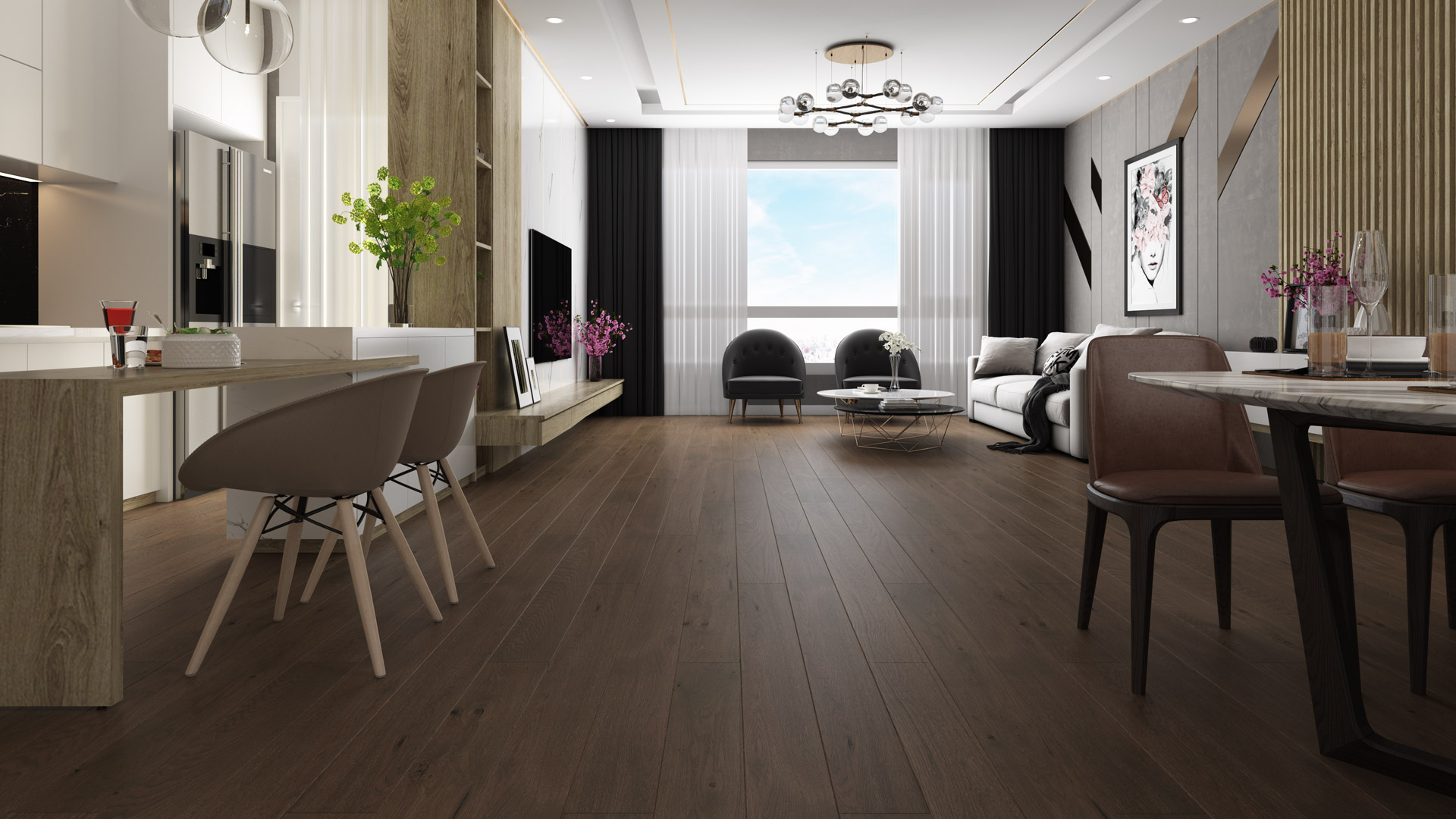
Dendro Planks – Pure Line Collection – Heraklia-D47
4. Accessories
Accessories are an integral part of any interior design. Using decors with natural textures can create a striking atmosphere. Wood is a timeless and harmonious option here too. Custom wooden vases, personalized shelves, triptych artworks with wooden inlays, wooden lighting fixtures and so much more. All these items have a very stylish feel that can make your interiors look much livelier.
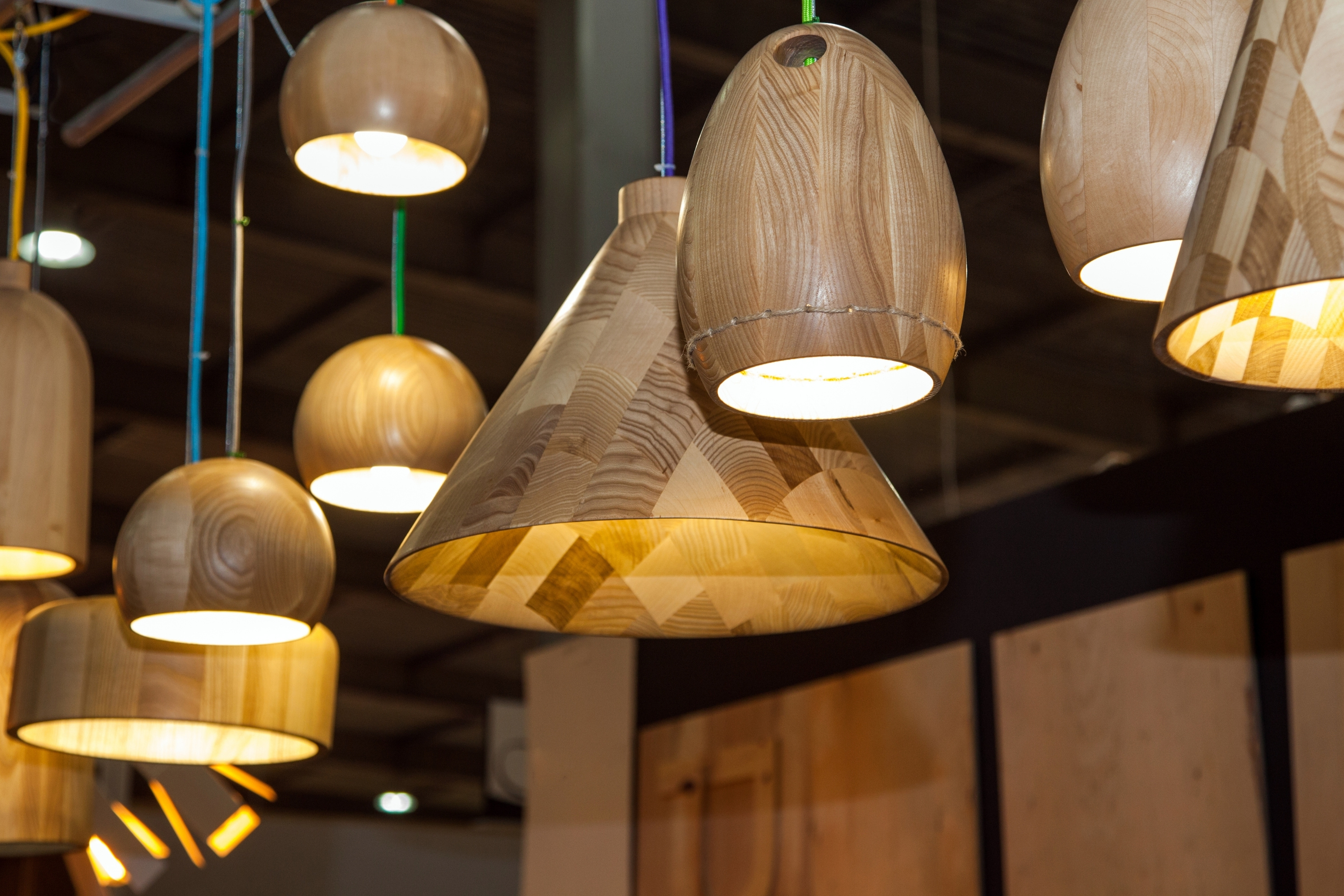
The use of natural textures in interiors offers various benefits in terms of health and sustainability as well as aesthetic and functional advantages. The correct and balanced use of natural materials such as wood and stone bring visual and functional richness to interior design. Therefore, the use of natural textures and especially wood in interiors is one of the most effective ways to create healthy living spaces in harmony with nature against the artificiality of modern life.
References






